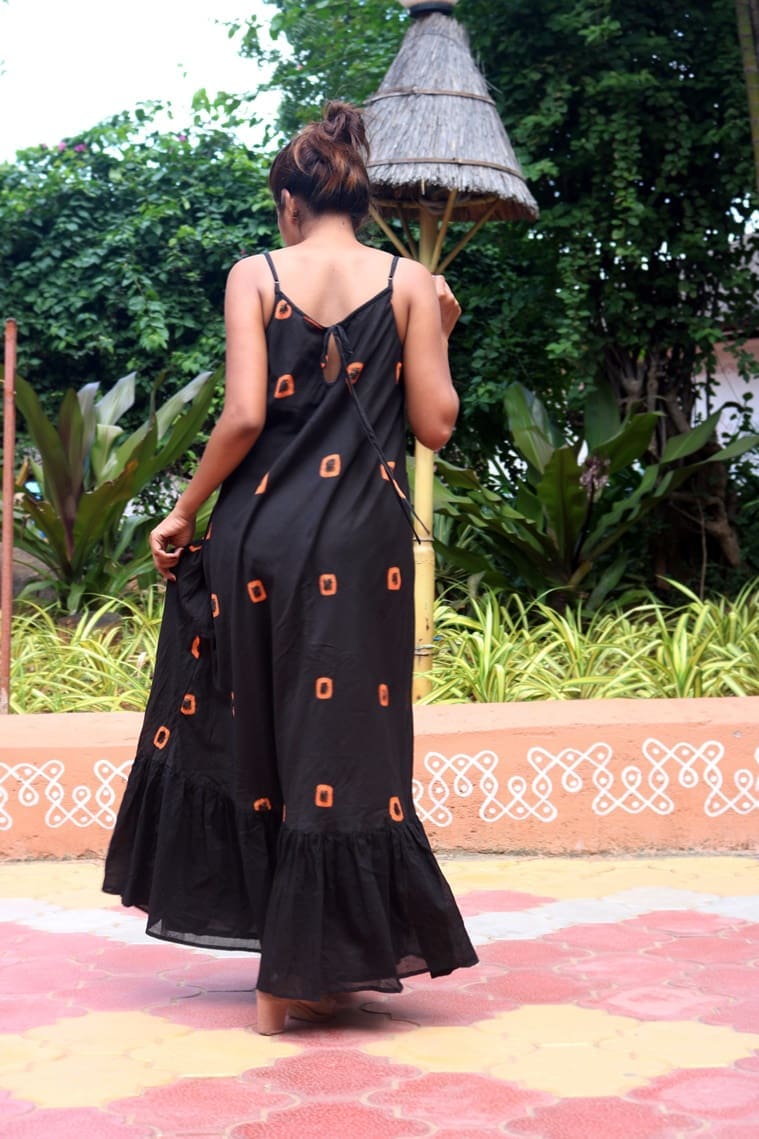The fact that most fashion brands use mill-made fabrics over handloom, digital embroidery and printing over hand embroidery and hand techniques is what made NIFT think of ways to encourage traditional Indian handloom, whether in the form of dyeing, embroidery or even printing, by Hyderabad fashion graduate Ekta Jaiswal.
“While it does make sense to use machines that make production much faster and garments much cheaper, we wanted to promote handmade garments and make our customers understand the value of slow fashion and Indian craftsmanship. We also aim at providing jobs for craftsmen and artists,” said Jaiswal, who runs HasthaKatha, a fashion shop she co-founded with her friend Divya in 2016, on Etsy, a global marketplace for handmade and unique items.
In the form of comfortable and wearable woven linen and cotton garments, HasthaKatha aims to blend folk art and traditional textiles with contemporary aesthetics, including an eclectic mixture of maxi dresses, jumpsuits, women’s scarves, among others.
For four years, Jaiswal worked in the fashion industry, which included an e-commerce company, a handloom retail brand and an international export house for fashion. During her stint with a handloom retail brand, Jaiswal and her partner had the opportunity to “clearly learn about the various handmade textiles and folk art from various parts of India.”
This led the pair to propose a brand concept to a fashion incubator and the decision to encourage Indian craft and folk art in the form of everyday clothing pieces, including an aesthetically rich and eco-friendly mix of cotton wear.
“Indian textile and handicrafts industry including silk and khadi constitute an important segment of the Indian economy as it is one of the largest employment generators after agriculture. This is because they are the root of our fashion and lifestyle industry. However, Indian handloom and handicraft products cost more and the pieces are not fashionably updated. The making cost depends on the number of hours that are put in to make a handloom product. As the craftsmen are not well-versed with marketing techniques, they need someone to market their products and due to this dependency, the middlemen pocket all the profits and the products become much more expensive than they should be, “said Jaiswal while pinpointing how “lack of diversification in designs and final products” is one of the major reasons.
“These problems can be solved if designers and global sellers like us join hands with our craftsmen directly and help them create products that are in sync with with the current fashion and design trends. If we promote our handloom and handicraft and help create more demand for these products, the production cost will decrease automatically, which will in turn reduce the final cost of the product,” she added.
At present, Jaiswal works with hand embroiders, hand dyers, block printers and painters. “Instead of completely using an art form, I take inspiration from one of the artforms and adapt it to create something new. Following the current trend, I create these pieces to customer’s taste. This is the time when fast fashion is at its peak and the market is competitive. In this race of fast fashion, we are trying to create and promote our alternate slow fashion,” the 29-year-old Delhi-based entrepreneur said.

Did the pandemic affect the traditional craftspersons?
“Most of the craftsmen work at their homes in their own small setup. Even during this pandemic, our craftsmen could work in their home workshops. But due to the lack of work, they suffered economically. They faced problems to even earn a basic living. People like us need to find new solutions for these new problems and work as a bridge between our artisans and the world,” said Jaiswal as she said how young entrepreneurs should take the online route to combine the best of traditional and modern worlds to make Indian products reach a global audience, even in unforeseen circumstances like the pandemic.
But given the push towards Made in India and online marketplaces, isn’t such a fashion venture becoming commonplace?
“Every individual mind works differently. A lot of Indian designers have taken up this initiative to help promote Indian handicraft in their own way. Our folk art and craft has so much to offer that even if more than one person takes inspiration from the same handicraft, their outcome will always be different. We should not think of it as competition. In fact, this way we will be able to offer more to the world by doing what we are good at,” said Jaiswal.
SOURCE: IndianExpress

